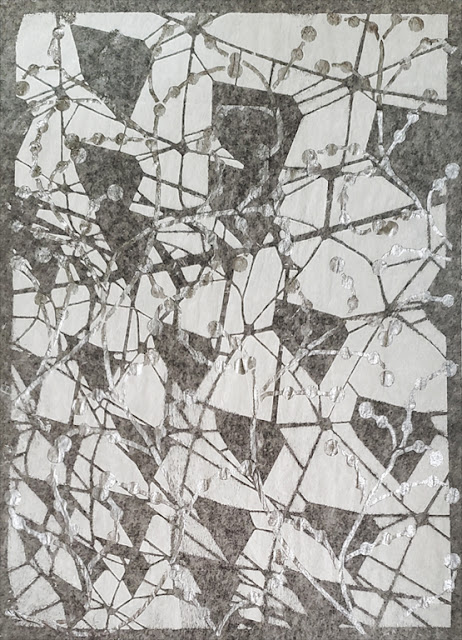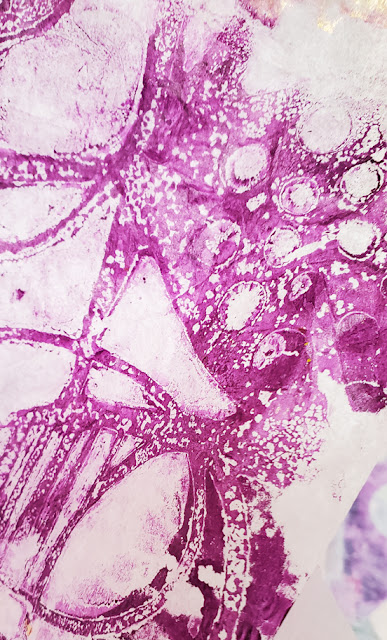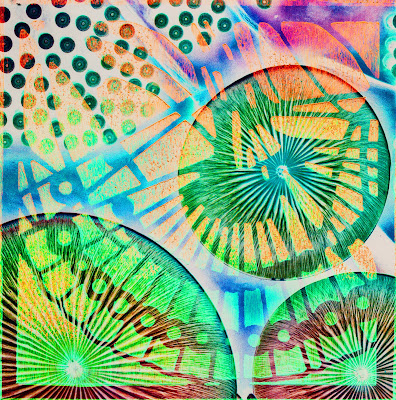Again today, I saw a familiar question floating around in online artists' groups.
The question asks whether or not to spend extra dollars for top-quality paintbrushes and high-quality acrylic paints.... especially since cheaper alternatives flaunt themselves.
Years ago I thought a big variety of brushes was necessary. And it's true that a few different styles and sizes are a must. But with practice I learned that some brushes can serve multiple uses, depending on how they're held, how heavily they're loaded with paint, etc. Experience has also convinced me that good-quality brushes give results I'm much more apt to like. So I've invested in expensive brushes. Some of mine are over 40 years old! They last, if treated with TLC. Be kind to your brushes and they will be kind to you!
Long ago I drew a personal line banning all cheap acrylic paints. What few were on hand, I donated away -- with a touch of guilt, because cheap acrylic paint teaches an artist bad painting habits ... habits and practices that will hinder, rather than help, when the day comes that expensive paints become an option.
It works somewhat the same way as giving a young child a coloring book filled with lined-out shapes -- drawn by someone else! -- and saying, "Color inside the lines!" This is like telling the child to trust somebody else's idea of what art "should look like." Sadly, I've met people have grown to adulthood weighted down under this notion -- so now, they want to learn how to do everything "just right." But in reality, art-making yearns to be fueled by an urge to make visible feelings that can't be fitted into vocal expression. Starting in that first wonderful and dazzling moment of existence, everyone has unique creativity, wrapped up in inherent human dignity.
Like a youngster being told to "color inside the lines," a beginning painter can become hobbled by using cheap acrylic paints.
I encourage considering financial investment in each of the three primary colors as well as titanium white and a jar of acrylic medium, either matte or gloss; either liquid or gel.
Besides building a solid foundation of painting habits and skills, purchase of top-quality acrylics can prove less expensive in the long run -- because the high pigment load of quality acrylic paint enables it to stretch farther, especially when mixed with one of the acrylic media, either clear (gloss medium) or somewhat cloudy (matte medium.)
Other perks?
Mixing a palette within a tight framework of only primary colors teaches not only valuable mixing skills, but also provides customized colors that will not exactly match anyone else's: If you mix your yellow with your red, your resulting orange will not be exactly like the orange of someone else who bought orange paint and used it straight from the tube.
Here's a quick dip into the topic of cool reds versus hot reds, cool yellows versus warm yellows and cool blues or greens versus warm blues or greens.
As the budget allows, it's a worthwhile investment to buy one cool red, one hot red, one cool yellow, one hot yellow and one cool blue or green and one warm blue or green. Warms/hots play well together. Cools, likewise. By this I mean that mixing a cool red with a warm blue or green -- just to give one example -- will most likely give you something unexpected. "Unexpected" doesn't necessarily mean bad. It's actually just another step in the learning process (a process that never really ends.)
Where are the brakes to stop this soapbox spiel!?
Here!
Having used my (expensive) acrylic paints to make enough prints from here to the moon, I find that it's fun to tack prints together, building large sheets of printed paper. I like to discover what happens when I see a collection as one unit. It can change my perspective on the individual elements! You may want to try this with your own print collection!
In the upper left of today's final combo, directly above, I've placed a double-print I made on the wet-strength tissue paper described in another post earlier this week. This tissue will be cut and/or torn to be included in a future collage. Since it's on wet-strength tissue, much of it will turn translucent or transparent after matte medium or gloss medium adheres it to the background support of the collage. The acrylic paints that I used -- metallic gold and plain purple -- will be nearly the only parts of the printed paper that will remain clearly visible.
Thanks for your interest in my two new 6" x6" masks released September 28 -- Diatom s972 and Chandelier s971! To scroll thru the pages of my masks and stencils at StencilGirlProducts.com, please start here.
Enjoy making your prints!









































